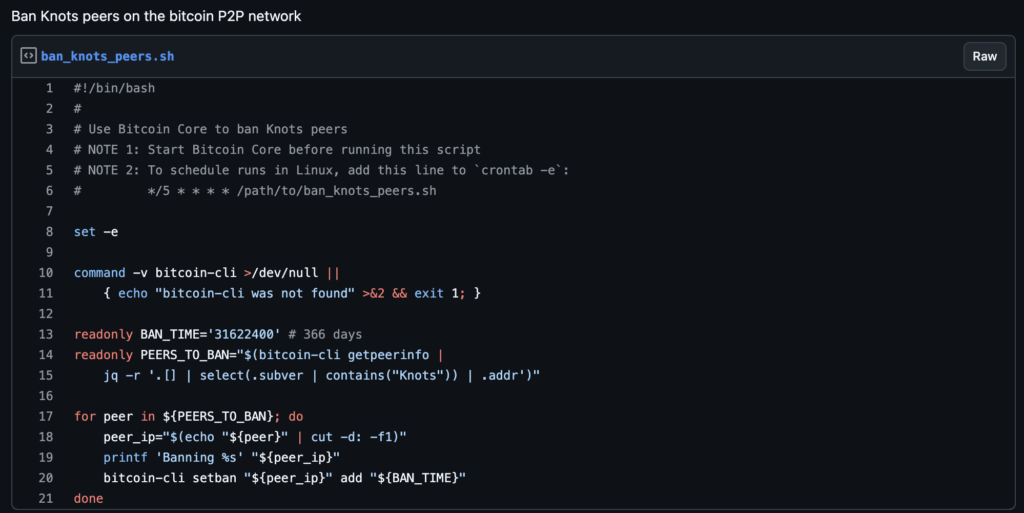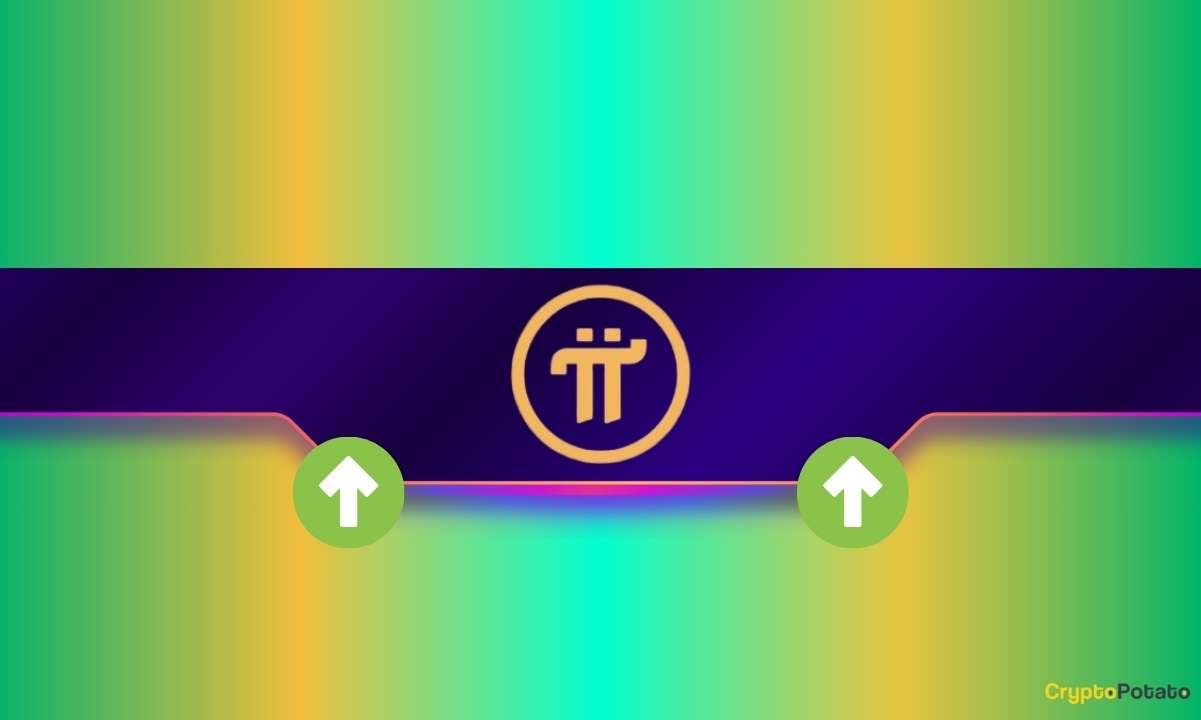Bitcoin Core developer Antoine Poinsot’s merged pull request removing the long-standing 80-byte OP_RETURN relay cap has triggered one of the most divisive mempool policy debates since the block size wars.
In a rapid escalation, a separate contributor posted a public bash script to auto-ban every known node running Bitcoin Knots, a policy-opposed implementation now representing approximately 13 percent of reachable Bitcoin peers.

The script, published to GitHub on May 24, enacts a year-long setban on all /Satoshi:Knots/ user agents.
If widely adopted, it would effectively isolate nearly 3,000 publicly reachable nodes, according to Coin Dance’s latest count of 2,938 as of June 24, undermining one of Bitcoin’s foundational decentralization metrics.
Unlike past disputes over consensus rules, the current clash centers on relay policy. With Core’s v30 client scheduled for release on October 3, the operational split could materialize without a hard fork.
The Knots implementation has gained momentum since the Core team merged Poinsot’s OP_RETURN policy change on May 6.
Its share of reachable nodes doubled over several weeks in May and has continued climbing through June, coinciding with vocal criticism of the change from its lead maintainer, Luke Dashjr, who described the removal of the cap as “utter insanity.”
While OP_RETURN is not consensus-critical, node-level policy decisions shape transaction propagation and mempool filtering, which in turn influence what miners include in blocks and which data-bearing transactions reach the network at all.
The Bitcoin OP War
The dispute’s origins date back to Bitcoin Core’s original enforcement of an 80-byte OP_RETURN limit in 2014. Initially, a tool to enable data inscriptions like notary hashes or token metadata, the OP_RETURN field became a spam vector during peak usage periods.
More recently, innovations like Ordinals and BRC-20 tokens have utilized similar mechanics to push high-fee, high-volume transactions onto the chain. Core v30’s scheduled October release will remove the cap entirely, allowing transaction creators to include larger OP_RETURN payloads provided they pay the requisite fees.
Opponents view this shift undermining Bitcoin’s role as a lean, monetary settlement layer. Samson Mow, CEO of JAN3 and a frequent critic of data-heavy usage patterns, urged users to “refuse to upgrade and stay on 29.0 or run Knots,” framing the issue as one of protecting network integrity.
Others like Peter Todd, who authored an earlier version of the same proposal in 2023, see the removal as a necessary simplification that defers to market conditions and fee incentives.
Because the OP_RETURN cap is enforced at the policy level, node operators can adopt or reject the change individually. This dynamic has elevated the role of miners and relay infrastructure operators, who ultimately decide which transactions make it into candidate blocks.
If a critical mass of top pools sides with Knots, blocks filled with larger OP_RETURN data may fail to propagate efficiently, creating a de facto veto. Conversely, if Core’s defaults dominate, alternative policies could become siloed and economically irrelevant.
Key participants began trading personal accusations as the dispute migrated from GitHub to public channels like X. Poinsot accused critics of “intentionally misleading” the public and “making s*** up,” amid growing hostilities over technical matters, governance, and communication norms.
The broader implications may extend to Bitcoin’s ability to accommodate divergent policy views without splintering its operational cohesion.
Consensus differences from the Block size wars
Unlike 2017’s block size debates, the OP_RETURN split does not require incompatible consensus rules. Still, the threat of a partitioned network looms, especially if coordinated peer bans become widespread. While block propagation across the two camps may remain functional, transaction relay pathways could fracture, impacting fee markets, data services, and blockchain analytics.
Bitcoin Core’s v30 client is now scheduled to freeze on August 20, with a branch-off planned for around September 6 and a final release tag targeted for October 3, per the updated GitHub schedule. No major mining pools, including Foundry, AntPool, F2Pool, ViaBTC, or Binance Pool, have issued statements regarding relay policy settings, leaving open whether v30’s changes will propagate by default or face silent resistance.
Since May, the number of Bitcoin Knots nodes has continued to climb, reaching 2,938 as of June 24, the highest on record and accounting for just over 13 percent of reachable peers. The original ban script remains live, and at least one new tool, btc-magic-guard, has emerged offering iptables-based filtering to isolate nodes running policy-divergent clients.
Meanwhile, a follow-up proposal to allow multiple OP_RETURN outputs per transaction was recently withdrawn after pushback, suggesting Core maintainers are unlikely to revisit or narrow the merged policy before v30 ships.
For now, the network remains unified under shared consensus rules, but the unresolved divergence in relay behavior, peer connectivity, and node policy has made soft partitioning a tangible scenario ahead of the October release.
The post Bitcoin’s cold war: Nearly 3,000 nodes at risk as policy tensions escalate ahead of Core v30 appeared first on CryptoSlate.



